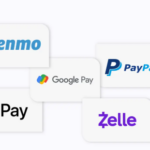In this article, I will discuss how to bridge Cosmos to Solana, and I will show it to you in detail. You will understand the instruments, processes, and the necessary safeguards to make the transfer as secure as possible.
- What is Blockchain Bridging?
- How to Bridge Cosmos to Solana
- Example – Bridging Cosmos and Solana through Wormhole Protocol (Step by step)
- Set up the wallets
- Go to the Wormhole Bridge
- Link the wallets
- Pick the tokens and amounts
- Check the transaction detail.
- Execute the transfer
- Wait for the transaction to be processed.
- Check the Solana wallet.
- Popular Tools to Bridge Cosmos to Solana
- Why Bridge Cosmos to Solana?
- Fees, Speed, and Security Considerations
- Tips for a Smooth Bridging Experience
- Future of Cross-Chain Bridges
- Pros & Cons
- Conclusion
- FAQ
Whether you’re looking to access Solana’s fast DeFi platforms, enjoy low fees, or explore its NFT marketplace, you will find everything you need in this post for a seamless bridging.
What is Blockchain Bridging?
A blockchain bridge enables transfers of assets and information across two different blockchain networks. Normally, blockchains work as silos and tokens or information on one chain cannot be directly used on another.

To address of this problem, A bridge serves as an intermediary, securely locking coins on one chain and minting new equivalent coins of another. This allows for cross chain interactions, such as using Cosmos tokens for DeFi apps on Solana.
Although the use of bridges is typically linked to increased freedoms across chains, it is essential to consider the weaknesses of smart contracts, network congestion, and other potential threats, and to implement appropriate bridging processes.
How to Bridge Cosmos to Solana
Example – Bridging Cosmos and Solana through Wormhole Protocol (Step by step)
Set up the wallets
- Download/install Keplr as the Cosmos-compatible wallet and any Solana wallet such as Phantom.

- Ensure both wallets have sufficient tokens, including gas fees, worth 0.1 native currency for transactions.
Go to the Wormhole Bridge
- Search for the Wormhole Protocol site and click on the bridge that connects Cosmso and Solana.

Link the wallets
- Link your computing device Keplr wallet on Cosmos and the Phantom wallet for Solana.
Pick the tokens and amounts
- Click on the Cosmos tokens to bridge and pick the number you wish to transfer.

Check the transaction detail.
- Make sure the fees, confirmations, and the wallet address for the ATM machine are all correct.
Execute the transfer
- The transaction in your Cosmos wallet will be processed. Wormhole will burn the tokens on Cosmos and create the exact amounts on Solana.
Wait for the transaction to be processed.
- The movement commonly takes a couple of minutes. You can check the Wormhole interface to follow the movement.
Check the Solana wallet.
- The bridged tokens will be in your Phantom wallet to be used for DeFi, NFT, and liquidity activities.
Popular Tools to Bridge Cosmos to Solana
Rango Exchange
Rango Exchange can transfer assets between the Cosmos and Solana ecosystems. It is one of the easiest token bridges to use, as it supports integrating more advanced and simpler methods into token bridges. It also directly uses multiple types of tokens. It also provides up-to-the-minute trustless transaction verification, enabling users to receive the most economic pricing and instant bridge services while maintaining accuracy.

Its integration into the Cosmos’ additional interoperable ecosystem and Solana’s additional allocated instant subsystem provides users free access to DeFi, NFTs, and other applications. This seamless integration makes Rango Exchange an optimal platform for bridging and managing assets.
Why Bridge Cosmos to Solana?
Ingress to the highest capacity blockchain – Solana is one of a kind, a tier zero chain with incredible transaction speed. Transactions and interactions with DeFi services are faster than on most other chains.
Transaction subsidization – Cosmos users save money on transfers and trading with Solana since its network fees are subsidized as well.
Access to more DeFi and NFT platforms – Users of Cosmos tokens can now utilize tokens to interact with the ever-growing Solana DeFi ecosystem, with its DeFi platforms, liquidity pools, and NFT marketplaces.
Interoperability and Flexibility – Bridging to Solana enhances the usability of Cosmos tokens, allowing users to move across multiple chains seamlessly.
Broadened Investment Opportunities – Users gain access to cross-chain yield farming, staking and liquidity, expanding user portfolios.
Higher Protection with bank-grade Trusted Bridges – Well-known and reputable bridging protocols move tokens with no risk of loss while utilizing the Cosmos and Solana networks together, ensuring the tokens move safely.
Fees, Speed, and Security Considerations
When bridging Cosmos to Solana, it’s vital to analyze its fees, security concerns, and transfer speeds. Each bridge protocol charges slightly differently, along with network gas fees and small service fees, but Solana fees are low, allowing it to be more economical for transfers.
Speed also relies on bridge blockchain congestion, and in most cases, transfers are completed in minutes, allowing for almost instant access to Solana DeFi as well as NFTs. Security is fundamental because bridges depend on smart contracts and validators.
Therefore, using reliable, audited protocols lessens the chances for hacks, token loss, or delays to cross-chain transactions.
Tips for a Smooth Bridging Experience
Use Established Bridges – Always select trusted and audited bridging protocols with a history of minimal or no hacks or token losses.
Cross Check Wallet Addresses – Always pay maximum attention to the addresses of Cosmos and Solana wallets for any errors before any transfer is initiated.
To Fulfill the Above Goal – Understand that bridging works by estimating or initiating with minimal token amounts.
Awareness of Any Transaction Costs – Understand and be aware of any gas costs that exist on Cosmos and Solana to eliminate any surprises.
Earmarked for Changes – Support and comply with works in progress of the official bridge to eliminate the chances of any breaks or malfunctions.
Wallets should be Transparent – Wallets with less minimal private and public accessibility for easy and safe management of assets.
Future of Cross-Chain Bridges
Cross-chain bridges will continue to unify an increasingly efficient blockchain ecosystem. Inter-network connections will become instantaneous, affordable, and fortified with enhanced security. The same will be true for networks such as Cosmos, Solana, and Ethereum, with Transferred decentralized checkups further minimized via layer-2 solutions.
Such sealed transactions will bolster user confidence as well. Cross-chain bridges will substantially contribute to the ever-growing integration of DeFi, NFTs, and Web3. These bridges will enable end users to switch freely between blockchain networks without being confined to any single network.
Pros & Cons
| Pros | Cons |
|---|---|
| Access to Solana’s high-speed, low-fee network | Risk of smart contract vulnerabilities if using untrusted bridges |
| Ability to use Cosmos tokens in Solana DeFi and NFT platforms | Network congestion can occasionally delay transactions |
| Increased interoperability across multiple blockchains | Fees for bridging, though generally lower on Solana, still apply |
| Enables cross-chain yield farming, staking, and liquidity opportunities | Requires careful wallet management to avoid errors |
| Flexibility to diversify investment strategies | Some bridges may have limited token support |
| Enhanced security with reputable, audited bridges | Risk of token loss if bridge protocol fails or is compromised |
Conclusion
Bridging Cosmos to Solana enables users to tap into Solana’s high-speed, low-fee ecosystem and its varied DeFi and NFT platforms. Using interfaces like Wormhole or Rango Exchange, users can move assets with ease and interoperates across several blockchains.
Considering costs, transfer time, and security makes any bridge seamless. With adequate risk management, bridging allows holders of Cosmos assets to broaden their crypto operations, diversify their portfolios, and enjoy fully what Solana has to offer.
FAQ
Which bridges support Cosmos to Solana transfers?
Popular options include Wormhole Protocol and Rango Exchange, both offering secure, fast, and reliable cross-chain transfers.
What fees are involved in bridging?
Bridging involves network gas fees and small service charges, with Solana generally offering lower fees than many other blockchains.
Is bridging safe?
Yes, if you use reputable, audited bridges. Always double-check wallet addresses, transfer small amounts first, and stay updated with protocol announcements.
Do I need separate wallets for Cosmos and Solana?
Yes, you need compatible wallets for each chain, such as Keplr for Cosmos and Phantom for Solana.








